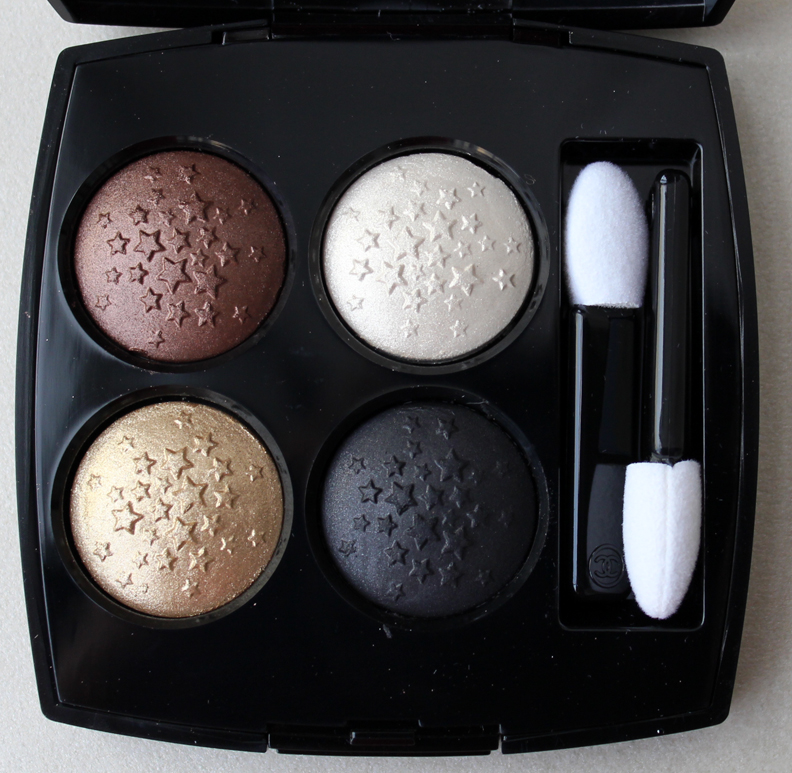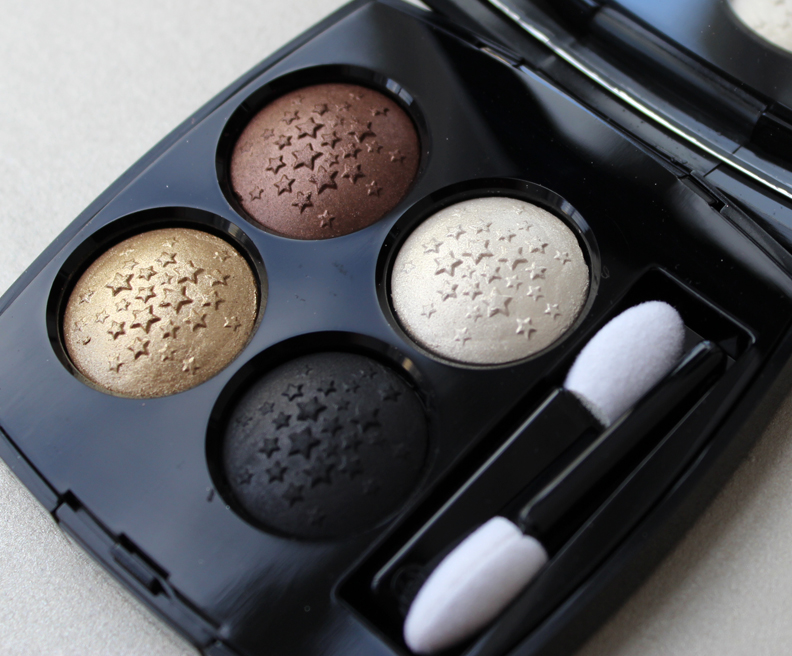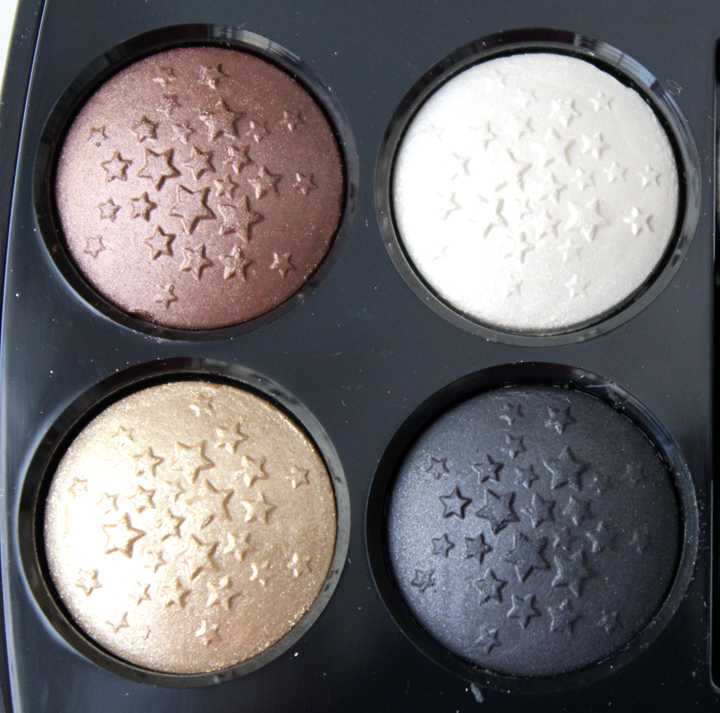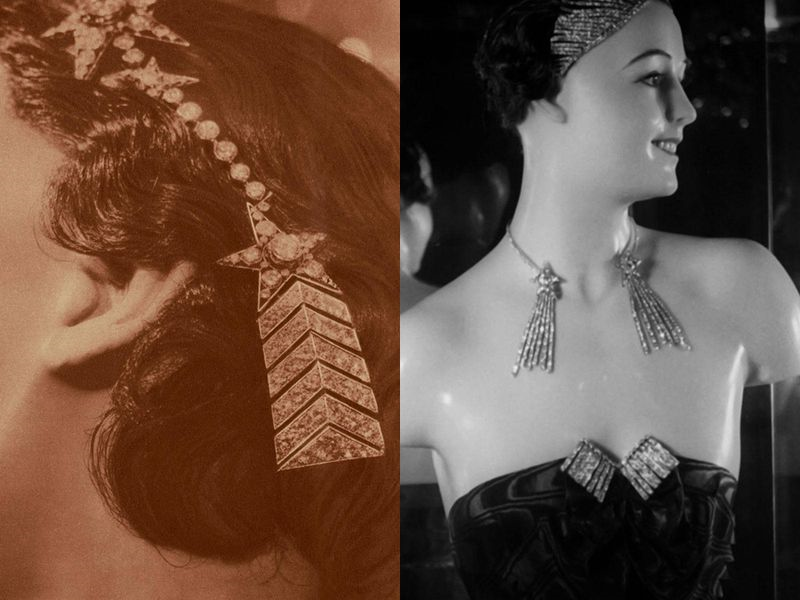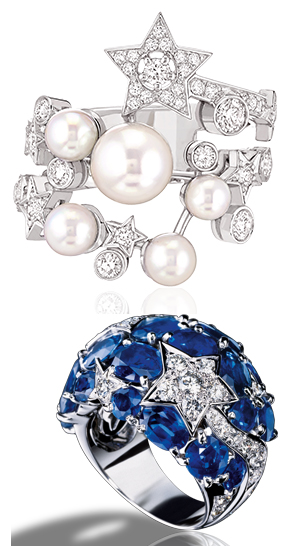Today I want to share a relatively hard-to-find Chanel quad that debuted during their 2015 cruise collection show. (This quad is also being given away by me – there's still a few hours left to enter – but will be arriving soon to the Chanel website so don't fret if you don't win the giveaway!) Rêve d'Orient has a gorgeous color scheme consisting of shimmery ivory, warm gold, deep bronze and matte black, all embossed with a smattering of tiny stars.
This quad was used on the models for 2015 resort collection runway show to create a smoky, Middle East-inspired eye with a dab of luxurious gold leaf placed on the inner corners.
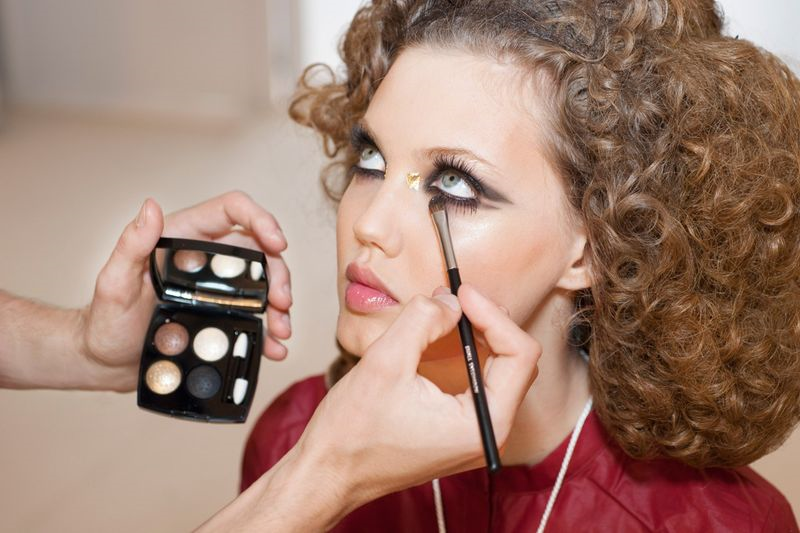
(image from vogue.co.uk)
However, I have no idea why a star design was included on the shadows themselves. Stars didn't appear on any of the clothing. One possibility is that it's an homage to Islamic religion (the show took place in Dubai), whose mosques are sometimes adorned with stars. The most famous example is the Star Mosque in Bangladesh.
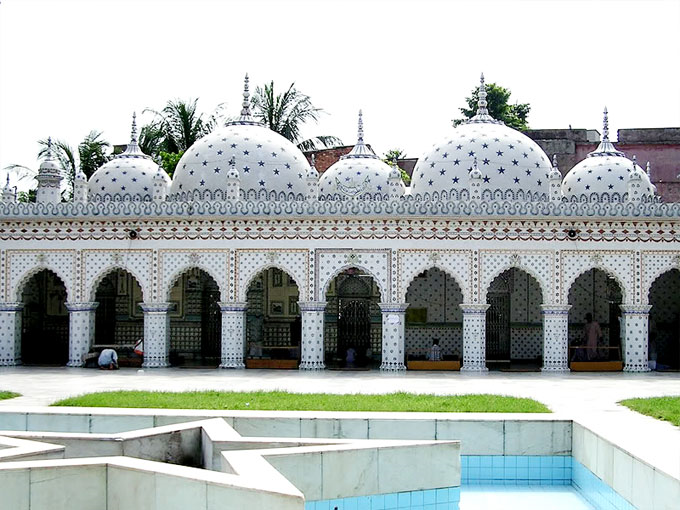
(image from beautifulmosque.com)
Some mosques have stars at the top of their spires, usually paired with a crescent.
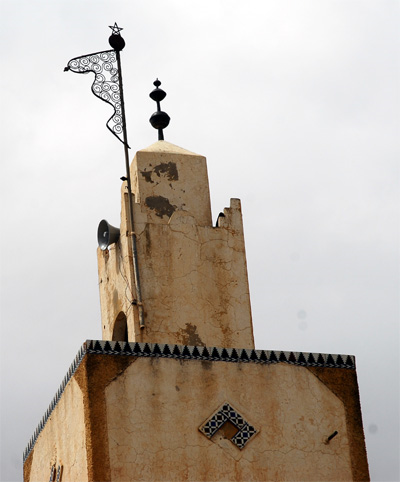
(image from essaouira.nu)
And some of the headbands at the show featured a crescent motif.
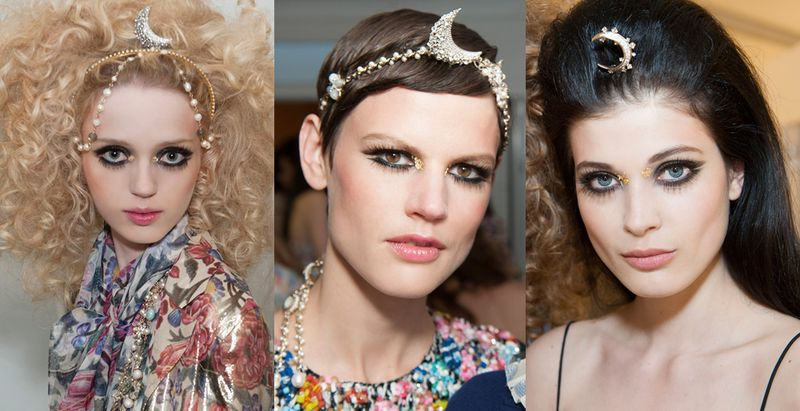
(image from vogue.co.uk)
Still, most star patterns in Islamic art and architecture consist of 6-, 8- and 10-pointed stars so it's quite a reach to assume Islam is what Chanel was referencing, especially considering there's no symmeterical pattern but rather a random scattering of stars. It could just be that it's a nonspecific expression of Karl Lagerfeld's latest take on the East-meets-West theme. As Lagerfeld remarked, "It’s a collection made for this part of the world, but I think, and hope, it’s for women all over the world."
The more likely possibility is that as with the Camelia de Plumes highlighter, the stars are borrowed from the first jewelry line by Coco Chanel that was introduced in 1932; specifically, the Comète series. Here are some of the original pieces (does anyone else find the mannequins to be incredibly creepy?)
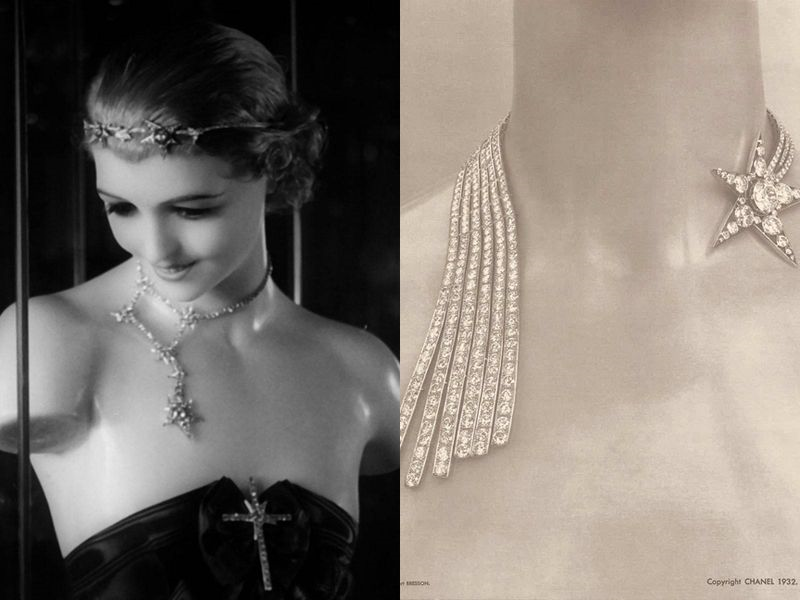
(images from elle.com)
An updated line was released for the original's 80th anniversary in 2012.
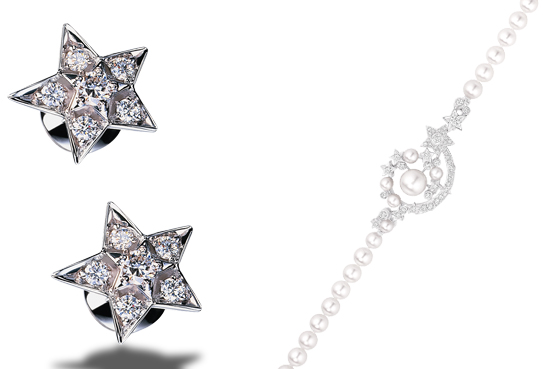
(images from chanel.com)
Since I have no conclusive answer on the star pattern, I thought I'd show you a slightly different Rêve d'Orient. This 1881 watercolor by Gustave Moreau (1826-1898) has the same name as the Chanel quad and shows a Peri (a fairy-like creature from Persian mythology) perched on a dragon and holding a lotus flower. The top of a mosque appears on the right side in the background.
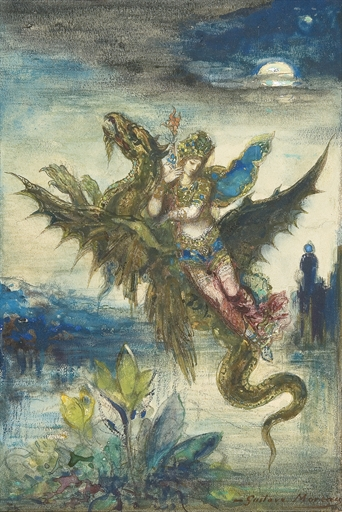
(image from christies.com)
You can read the entire description of this work and the meaning behind it here, since Christie's does a much better job than I can. Moreau is one of my favorite artists – I love French Symbolism and I'm actually reading this book on it now, so I was really excited to find this.
Anyway, as with the Chanel Camelia de Plumes highlighter, I'm a little disappointed there was no concrete explanation for the pattern. Both palettes vaguely reference Chanel fashion and history, but there's no real, literal connection to the clothing we saw in recent shows. Nevertheless the Rêve d'Orient quad is pretty and the star design is perfect for the upcoming holiday exhibition, so I can't complain too much.
What do you think the stars mean? And I know it's comparing apples to oranges, but do you prefer Chanel's Rêve d'Orient or Moreau's?


